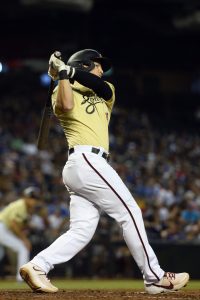Major League Baseball and the MLB Players Association jointly announced a series of rule changes for the upcoming 2022 season Thursday. There are no real surprises, as all of today’s changes had already reportedly been under discussion. Among them is an amended designated hitter rule — already commonly referred to as the “Shohei Ohtani Rule” — that allows a starting pitcher to remain in the game as the designated hitter even after he has been removed from the game as a pitcher. Similarly, a two-way player can also be lifted from the game as the designated hitter but remain in the game as a pitcher (though instances of that figure to be less common).
MLB also unveiled some tweaks to the active roster limits in an effort to cut down on injuries following a shortened Spring Training. Rosters will expand from 26 players to 28 players from Opening Day (April 7) through May 1. During that time, teams will be permitted to carry 29 players on days that doubleheaders are played. (It’ll be 27 players per doubleheader day thereafter.) The standard 13-pitcher limit per roster will not apply from April 7 through May 1 but will resume on May 2, when rosters revert to 26 players.
While the minimum length of stay on the injured list for pitchers and two-way players is increasing to 15 days this season, that won’t go into effect until May 2, either. From April 7 through May 1, pitchers and two-way players can be placed on the 10-day injured list. Today’s release also indicates that optional assignments prior to May 2 will not count toward the newly implemented maximum of five optional assignments per player, per season.
Most controversially, the league and the union announced that the extra-inning rule automatically placing a runner on second base will remain in place “in an effort to preserve player health and safety during the condensed schedule.” Notably, today’s announcement specifies that this rule is remaining in place “for the 2022 season” and makes no mention of 2023 and beyond. Of course, it’s certainly possible the two parties will discuss its continuation down the line. Automatic runners who score will not count as an earned run for the pitcher; they’ll be treated as a player who reached on a fielding error (although no error will be credited to the opposing team).
Today’s release also specifies that last year’s new rookie eligibility thresholds will remain in place. Per MLB’s press release, rookie qualification is defined thusly: “A player shall be considered a rookie unless, during a previous season or seasons, he had (a) exceeded 130 at-bats or 50 innings pitched in the Major Leagues; or (b) accumulated more than 45 days on the active roster of a Major League Club or Clubs during the Championship Season (excluding time on the Injured List).”

